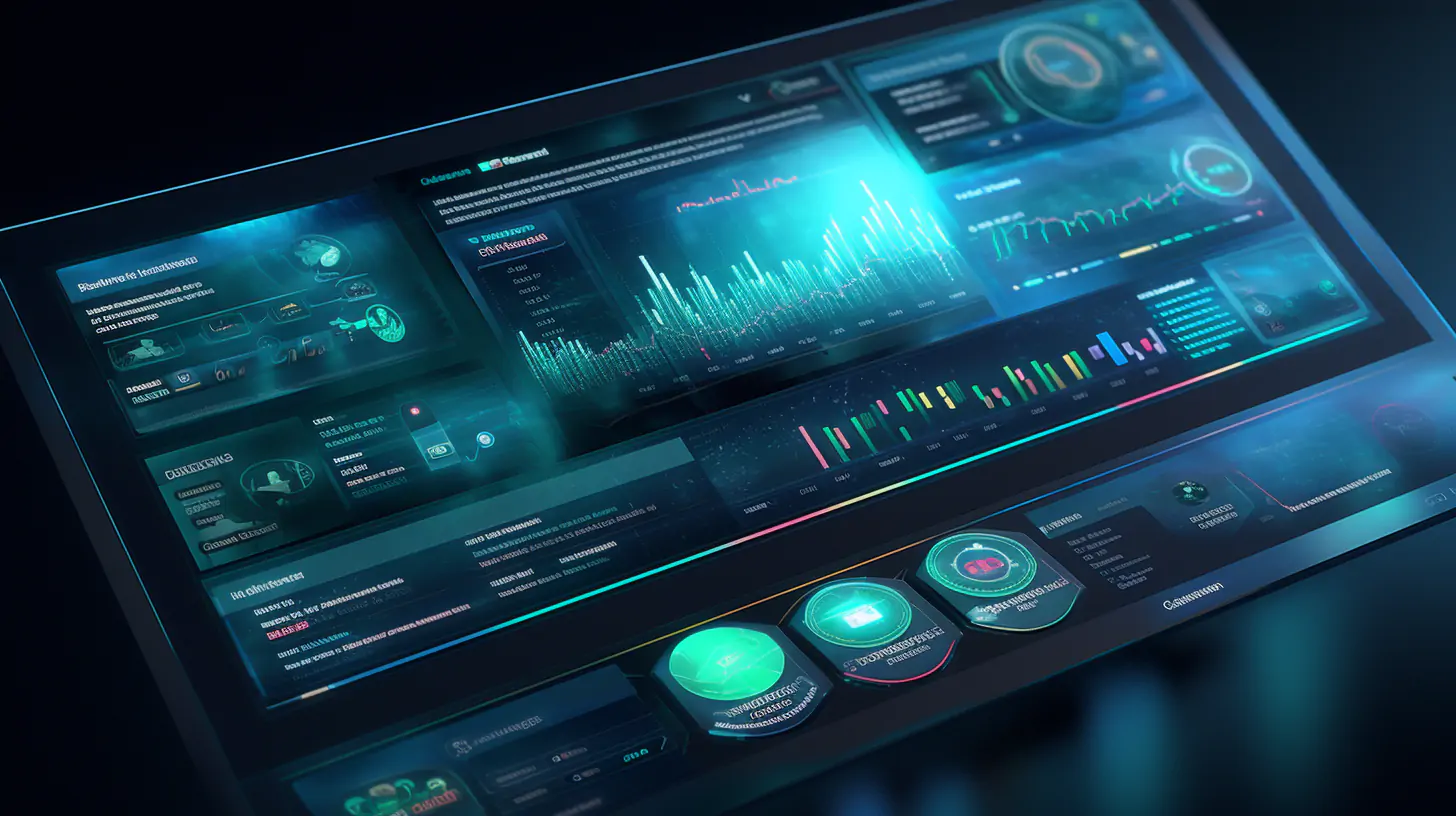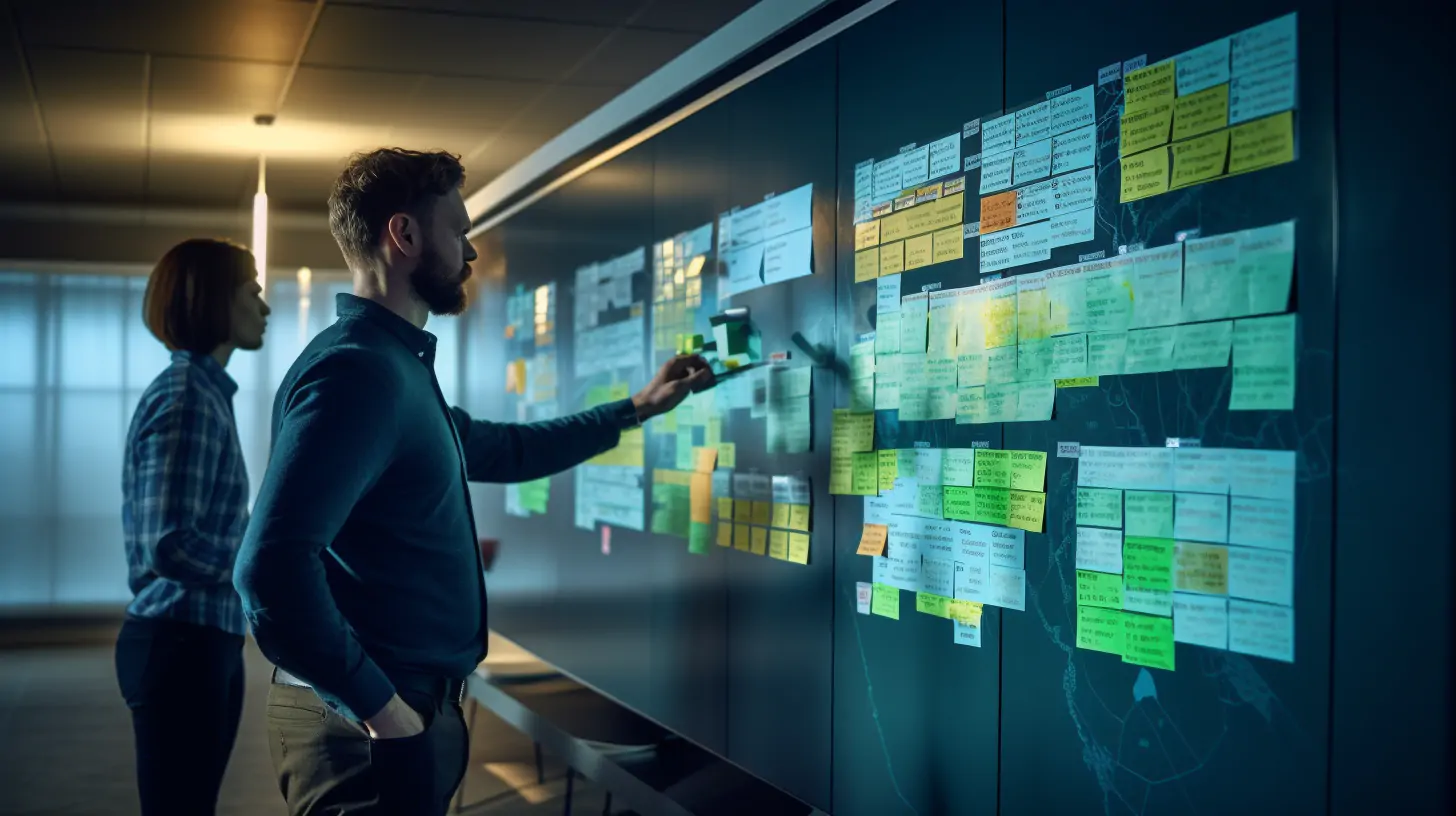This article explains the impact of Agile methodology on UX/UI design. Agile emphasizes collaboration, adaptive planning, and continuous improvement.
UX design ensures the product meets user needs through research, wireframes, and iteration. Integrating UX/UI into Agile requires communication between designers, developers and stakeholders. User-centered design, iterative prototyping, user stories, and frequent usability testing are key. Balancing speed and quality is important.
Design sprints can accelerate the process. Challenges exist but applying Agile principles and focusing on users enables teams to create successful, intuitive interfaces.
Interesting statistics
Engineering and R&D teams stand out as the fastest-growing adopters of Agile, now comprising 48% of Agile practitioners, a 16% increase from 2022 according to a research by business map
87% of Kanban adopters noted that the Kanban method proved to be a more or much more effective approach to work management than previously employed methods according to a study by Kanban University
Benefits of Agile are undeniable; compared to non-Agile teams, 93% of Agile organizations reported better customer satisfaction, 76% reported better employee engagement, and 93% reported better operational performance according to a leading research by McKinsey and Co.
64% of companies improved software delivery with agile adoption according to a leading survey by Simform
Agile and its Impact
The Agile methodology has gained significant popularity in software development due to its flexible and iterative approach. Unlike traditional waterfall methods, Agile promotes collaboration, adaptive planning, and continuous improvement throughout development.
Although Agile primarily focuses on development, it is essential to understand its impact on user experience (UX) and user interface (UI) design.
General Points to Consider
So, you're thinking about bringing UX and UI designers into your Scrum team? Buckle up, because it's not as simple as just adding new faces to the daily stand-up
The 'Where Do We Put Them?' Dilemma Are you going to mix designers into your dev team like chocolate chips in cookie dough, or keep them in their own special UX squad? Either way, you'll need to figure out how to make everyone play nice together.
The 'How Does This Even Work?' Puzzle Your team probably has a workflow smoother than a well-oiled machine. Now, imagine throwing a wrench named 'UX' into those gears. How will you keep things running without grinding to a halt?
The 'Time is Money' Reality Check Let's face it, good design takes time (and moolah). Are you ready to invest in UX, or will it be a 'we'll do it if we have time' afterthought?
The 'But What Do Users Want?' Quest UX design is all about the users, baby! How will your Product Owner and designers team up to turn user feedback into Agile gold?
The 'Agile Mindset' Makeover Is your team ready to embrace the UX way of life? It's time for a group hug and a commitment to collaboration and constant improvement!
The 'UX 101' Crash Course If your team thinks UX is just making things look pretty, it's time for some education. Consider hosting a 'UX for Dummies' workshop to get everyone on the same page.
Remember, adding UX to your Scrum team is like adding spice to your favorite dish - it can make things way better, but you've got to know how to use it right!"
The Role of UX
UX design covers all aspects of a user's interaction with a product or service to create a meaningful and enjoyable experience. In Agile projects, UX design plays a vital role in ensuring that the final product meets the needs and expectations of users.
This includes understanding user behavior, conducting user research, building wireframes and prototypes, and iterating based on user feedback.
Integrating UX/UI Design and Agile
Integrating UX/UI design into Agile projects calls for strong communication between designers, developers, and stakeholders. Getting UX/UI design involved early in the development process helps the team align on user needs, set clear design objectives, and establish a unified vision. This collaborative effort ensures a more cohesive and user-focused product outcome.
Agile methodology highlights the importance of cross-functional teamwork, especially in UX/UI design. Here, designers and developers collaborate closely, working as a unified team. They frequently exchange ideas, provide feedback on each other’s work, and collaboratively develop solutions.
Working closely together in this Agile environment brings clear benefits. The open exchange of feedback allows for faster design revisions, and with a unified understanding of the project goals, the chances of inconsistencies in the design are minimized.
Perhaps most importantly, this collaborative environment ensures that user feedback remains a central focus throughout the development process, aligning with Agile user-centric philosophy.
User-centric design
User-Centered Design (UCD) is the core principle of responsive UX/UI design. UCD includes understanding user behavior, preferences, and pain points to inform design decisions.
Agile teams can create user-centric interfaces that provide a smooth and intuitive experience by conducting user research, testing, and collecting user feedback.
Iterations
Agile projects thrive on iteration and continuous improvement. Iterative Agile UX/UI design involves prototyping, collecting feedback, and refining designs in short cycles.
By adopting an iterative approach, teams can quickly identify design flaws, test assumptions, and make informed decisions based on user input, resulting in a better, more user-friendly end product.
One of the advantages of the Agile methodology is its ability to adapt to changing requirements and user needs. User Preferences and market dynamics can change rapidly in a rapidly changing digital landscape.
Agile UX/UI design addresses this reality by allowing teams to redesign, experiment, and adjust designs to meet growing user needs, ensuring that the final product remains relevant and competitive.
User Research
User research is a critical UX/UI design component, allowing teams to gain insight into user behavior, motivations, and pain points. In Agile projects, time constraints can make it difficult to conduct extensive research.
However, teams can collect valuable user feedback without sacrificing project timelines by applying lean research methods such as quick surveys, interviews, and usability tests.
Agile Prototyping
Prototyping is a fundamental practice in Agile UX/UI design. Prototypes physically represent the user interface, allowing teams to gather feedback, test usability, and improve designs.
By creating low-fidelity prototypes early in development, teams can identify and fix design issues early, resulting in more robust and user-friendly interfaces.
User stories and character development
User stories and personas are valuable tools in agile UX/UI design, helping teams to empathize with users and prioritize design decisions.
User stories capture the goals and behavior of users, and characters are fictional archetypes that embody certain characteristics of users.
By integrating user stories and personas into Agile workflows, teams can align their design efforts with user needs, improving the overall user experience.
Kanban software plays a crucial role in visualizing and managing the flow of work. Tools like Trello or Jira with Kanban boards help teams track user stories, design tasks, and development work in one centralized place.
This visibility allows designers and developers to see how their work fits into the bigger picture, facilitates smoother handoffs, and helps identify bottlenecks in the design-to-development pipeline.
By leveraging Kanban software, Agile teams can ensure that user-centric design remains a priority throughout the project lifecycle, even as they juggle multiple tasks and iterations.
Usability Testing
Usability testing is necessary to evaluate the effectiveness and efficiency of the user interface.
In Agile projects, usability testing should be done early and often to test design assumptions, identify bottlenecks, and gather feedback for iterative improvements.
By involving users in the development process, teams can create intuitive, easy-to-use interfaces that meet user expectations.
Balance between speed and quality
The Agile methodology puts a lot of emphasis on delivering working software quickly. However, speed should not come at the expense of quality. Finding the right balance between speed and quality is essential in responsive UX/UI design.
By using design systems, establishing design guidelines, and using reusable components, teams can streamline the design process while maintaining consistency and quality across the entire product.
Design Sprints
Design sprints, popularized by the Google Ventures team, are time-limited workshops encouraging rapid idea generation, prototyping, and testing.
Design sprints can be very effective in agile UX/UI design, allowing teams to quickly tackle complex design challenges, test ideas, and make informed design decisions.
Design sprints encourage collaboration, creativity, and the integration of user input into the design process.
Agile Collaboration
Effective communication and collaboration between designers and developers are vital to successful Agile UX/UI design.
Regular meetings like daily stand-ups and sprint reviews allow designers and developers to coordinate their efforts, share progress, and quickly resolve design or implementation issues.
Transparent communication channels and a shared understanding of the project goals ensure that design and development work harmoniously to create an exceptional user experience.
Challenges
Integrating UI/UX design into the Scrum framework can present several challenges, despite Scrum's seemingly straightforward process.
In theory, Scrum operates on a cyclical basis: the team selects items from a well-maintained product backlog every two weeks or so, agrees on tasks for the upcoming sprint, and delivers a new software increment at the sprint's end.
However, when significant UI/UX design is involved, several complications can arise:
Design-Development Mismatch: UI/UX design often requires a more holistic approach, considering the entire user journey and overall product coherence. This can clash with Scrum's incremental development model, where features are built and delivered in small chunks.
Time Constraints: The typical two-week sprint may not provide enough time for thorough user research, ideation, prototyping, and testing that are crucial for good UI/UX design. This can lead to rushed or incomplete design work.
Iterative Nature of Design: Design often requires multiple iterations and refinements based on user feedback. This iterative process may not align well with Scrum's fixed sprint structure, where completed work is expected at the end of each sprint.
Definition of "Done": In Scrum, a task is either complete or not. However, design work can be more nuanced, with varying degrees of completion or readiness for implementation.
Cross-functional Team Challenges: While Scrum promotes cross-functional teams, designers and developers often have different workflows and tools. Integrating these can be challenging within a single sprint.
Backlog Management: UI/UX tasks can be difficult to break down into sprint-sized chunks, making backlog grooming and sprint planning more complex.
User Testing and Feedback: Incorporating user testing and feedback loops into the Scrum process can be challenging, especially if it needs to happen within the confines of a sprint.
Design Consistency: Ensuring a consistent user experience across features developed in different sprints can be difficult, especially if design decisions are made incrementally.
Resource Allocation: Balancing the workload of designers across sprints can be tricky, especially in projects where design needs fluctuate.
Long-term Vision vs. Short-term Delivery: Scrum's focus on short-term deliverables can sometimes conflict with the need for a long-term, cohesive design vision.
To address these challenges, many teams adopt hybrid approaches, such as incorporating design sprints before development sprints, using a "design buffer" where design work is done one or more sprints ahead of development, or adopting a Lean UX approach that fits more naturally with Agile methodologies.
How to overcome it?
By applying agile principles, encouraging collaboration, and using user-centric design practices, teams can overcome these challenges and maximize opportunities to create great user interfaces.
In summary, incorporating UX and UI design into Agile projects is crucial for developing user-focused, intuitive, and successful digital products. By understanding the impact of Agile methodology on UX/UI design, using collaboration, iterative design, and user research, teams can create compelling interfaces that meet user needs and adapt to changing requirements.
Agile UX/UI design allows teams to create great user interfaces by balancing speed, quality, and collaboration throughout the development process.
FAQ
How can Agile teams ensure accessibility in UX/UI design?Agile teams can ensure accessibility by following Web Content Accessibility Guidelines (WCAG), conducting accessibility testing, and involving users with disabilities in the design process.
What are some common UX/UI design tools used in Agile projects?Popular tools include Sketch, Figma, Adobe XD, and InVision, which facilitate collaboration, prototyping, and design handoff to development teams.
How does Agile UX/UI design differ from Lean UX?While both emphasize iterative design and user feedback, Lean UX focuses more on rapid experimentation and validation, while Agile UX/UI design is more closely integrated with Agile development processes.
What is the role of a UX/UI designer in an Agile team?A UX/UI designer in an Agile team is responsible for conducting user research, creating user flows, designing wireframes and prototypes, and collaborating with developers to ensure the design is implemented correctly.
How can Agile teams measure the success of their UX/UI design?Agile teams can measure UX/UI success through user feedback, usability metrics (e.g., task completion rates, time on task), engagement metrics (e.g., conversion rates, bounce rates), and user satisfaction surveys.
What are some best practices for conducting remote usability testing in Agile projects?Best practices include using online tools like UserTesting or UsabilityHub, providing clear instructions to participants, and conducting post-test interviews to gather qualitative insights.
How can Agile teams incorporate UX/UI design into their definition of "done"?Agile teams can include UX/UI criteria in their definition of "done," such as meeting accessibility standards, passing usability tests, and receiving positive user feedback.
What is the importance of design systems in Agile UX/UI design?Design systems provide a centralized repository of reusable UI components and design guidelines, ensuring consistency, reducing design debt, and accelerating the design process in Agile projects.




